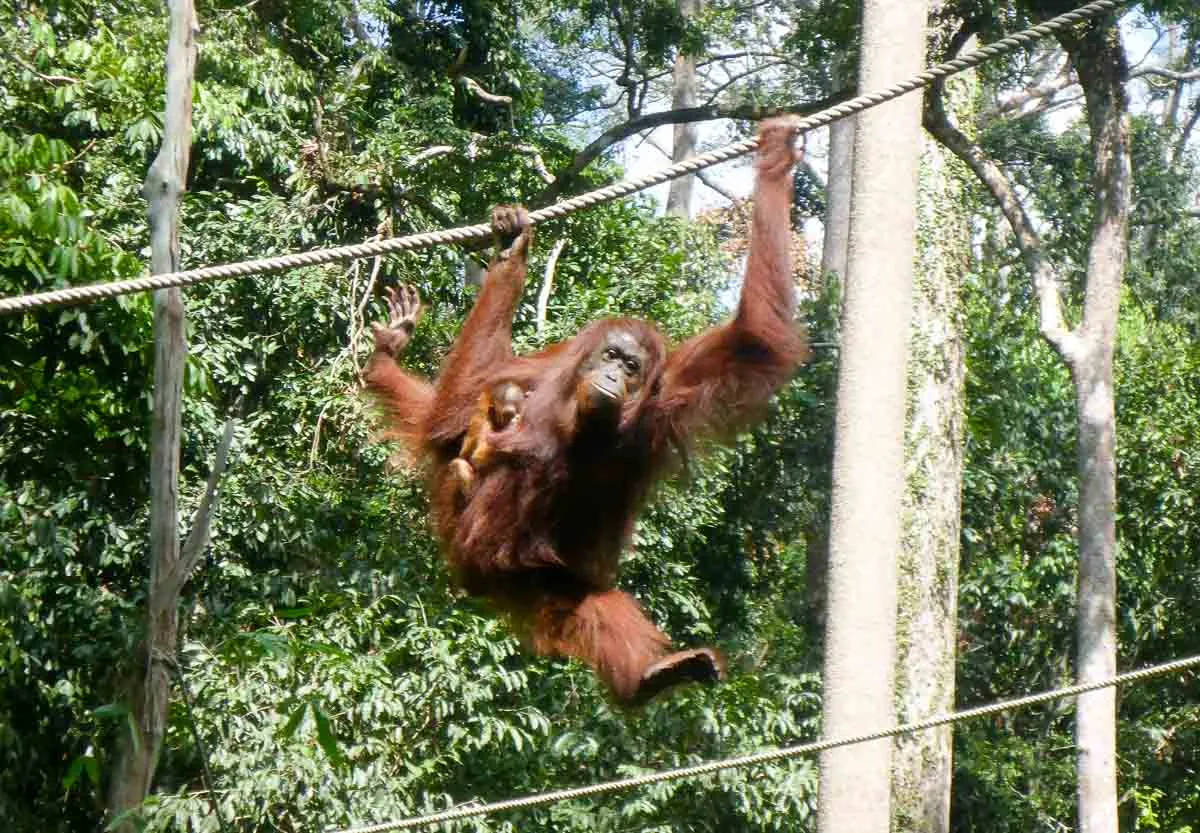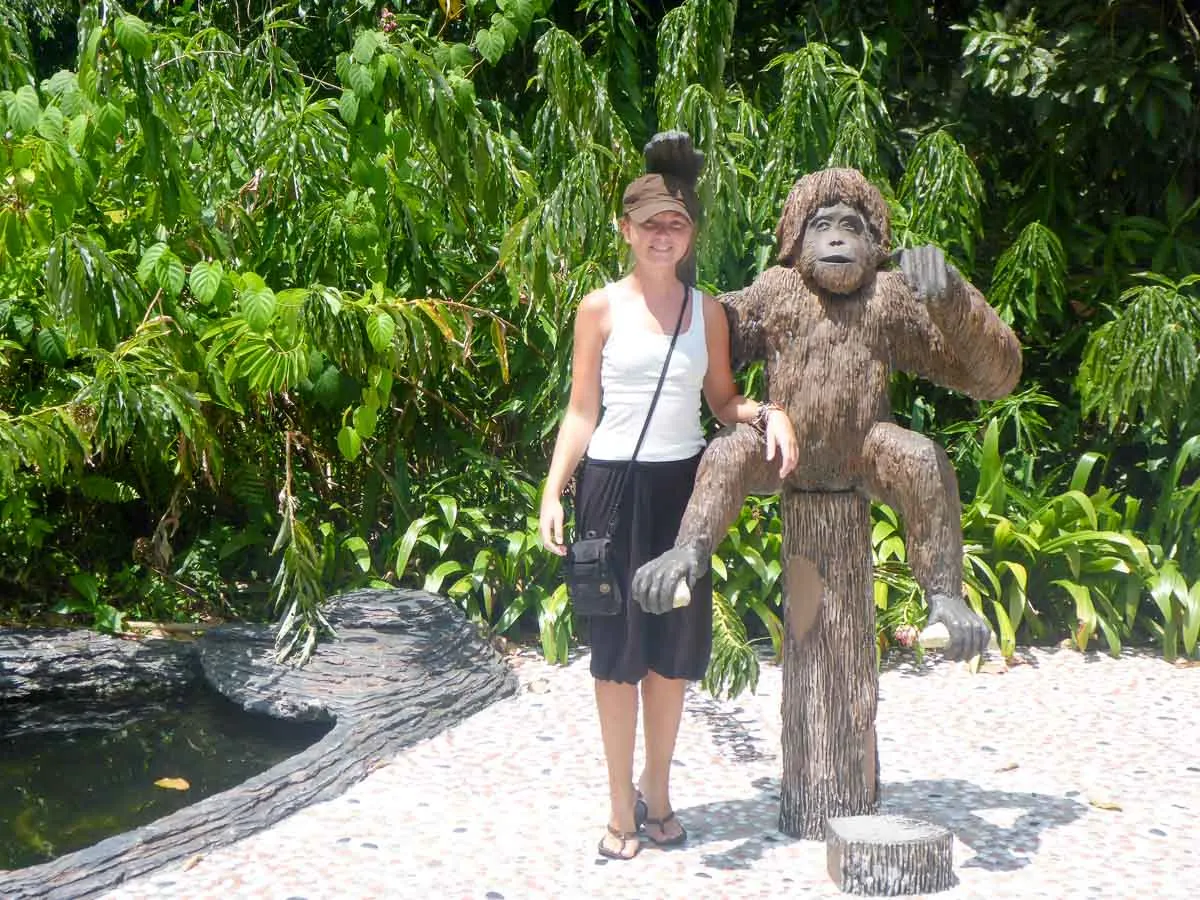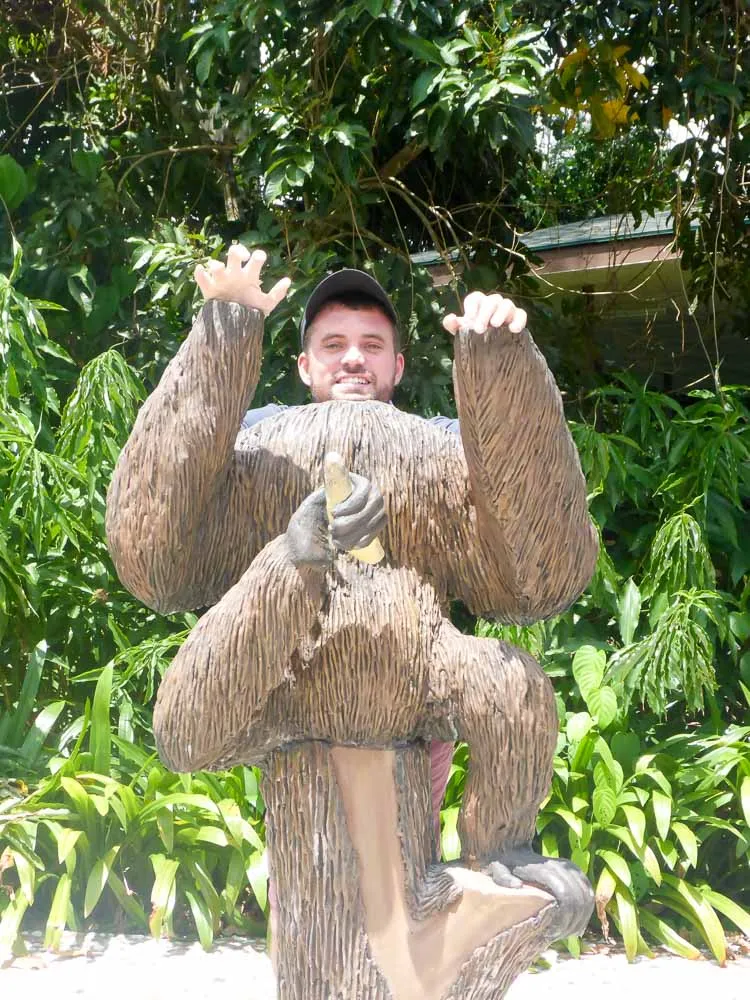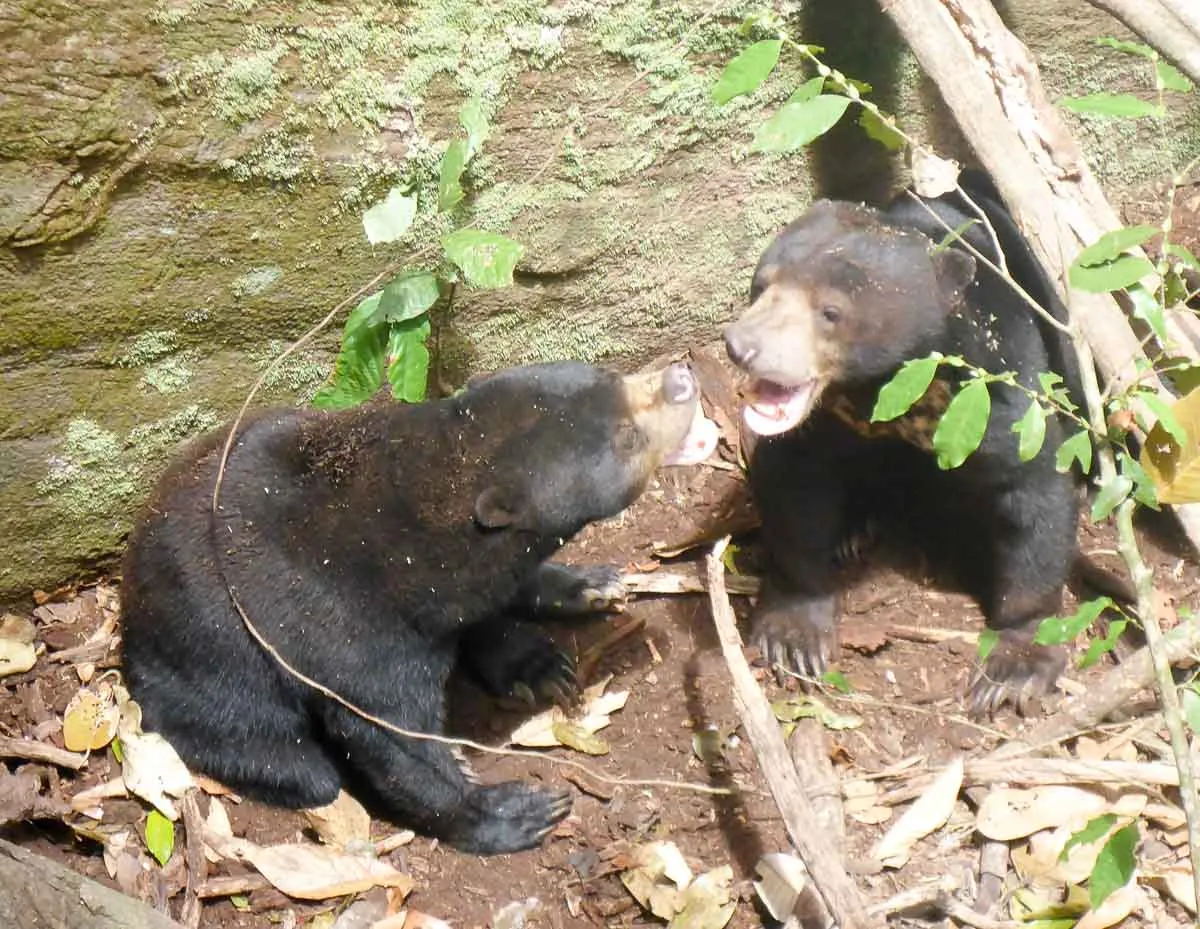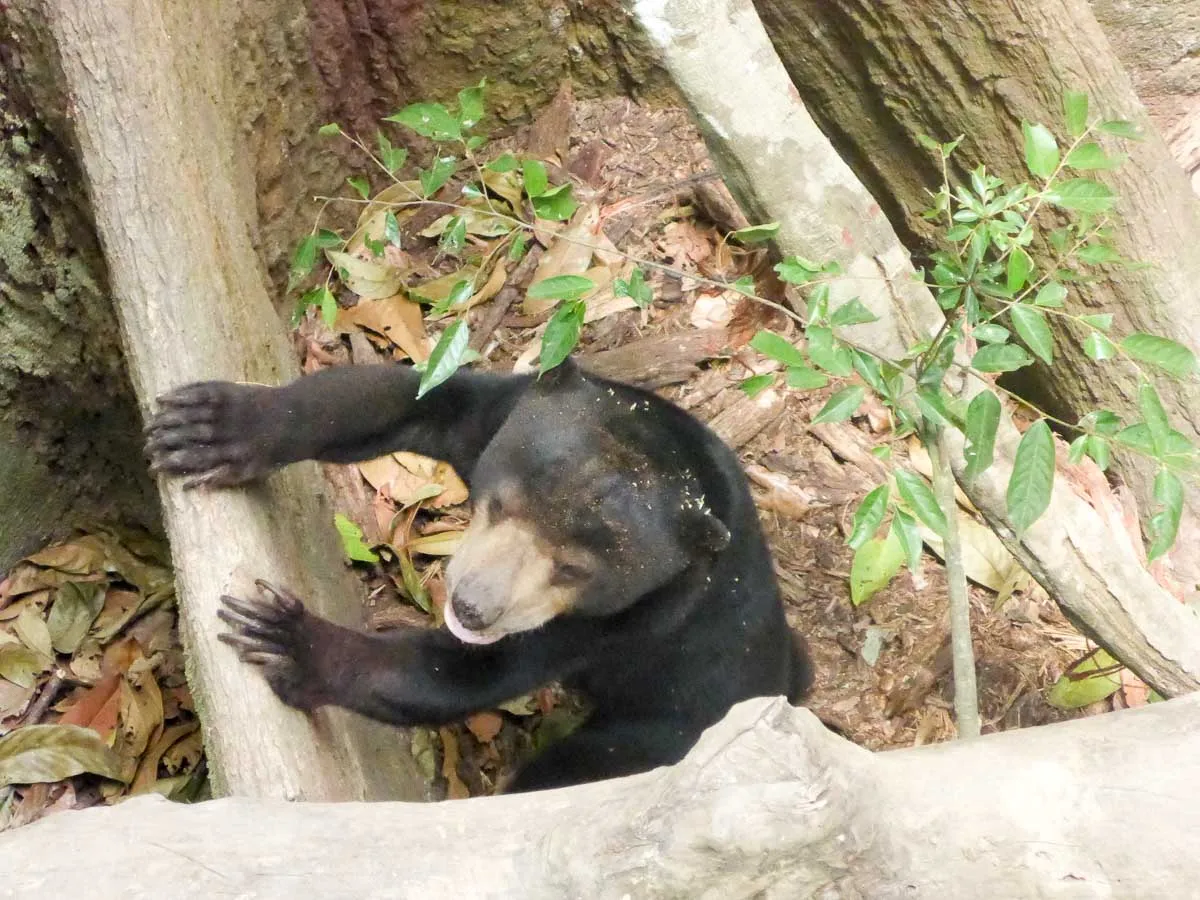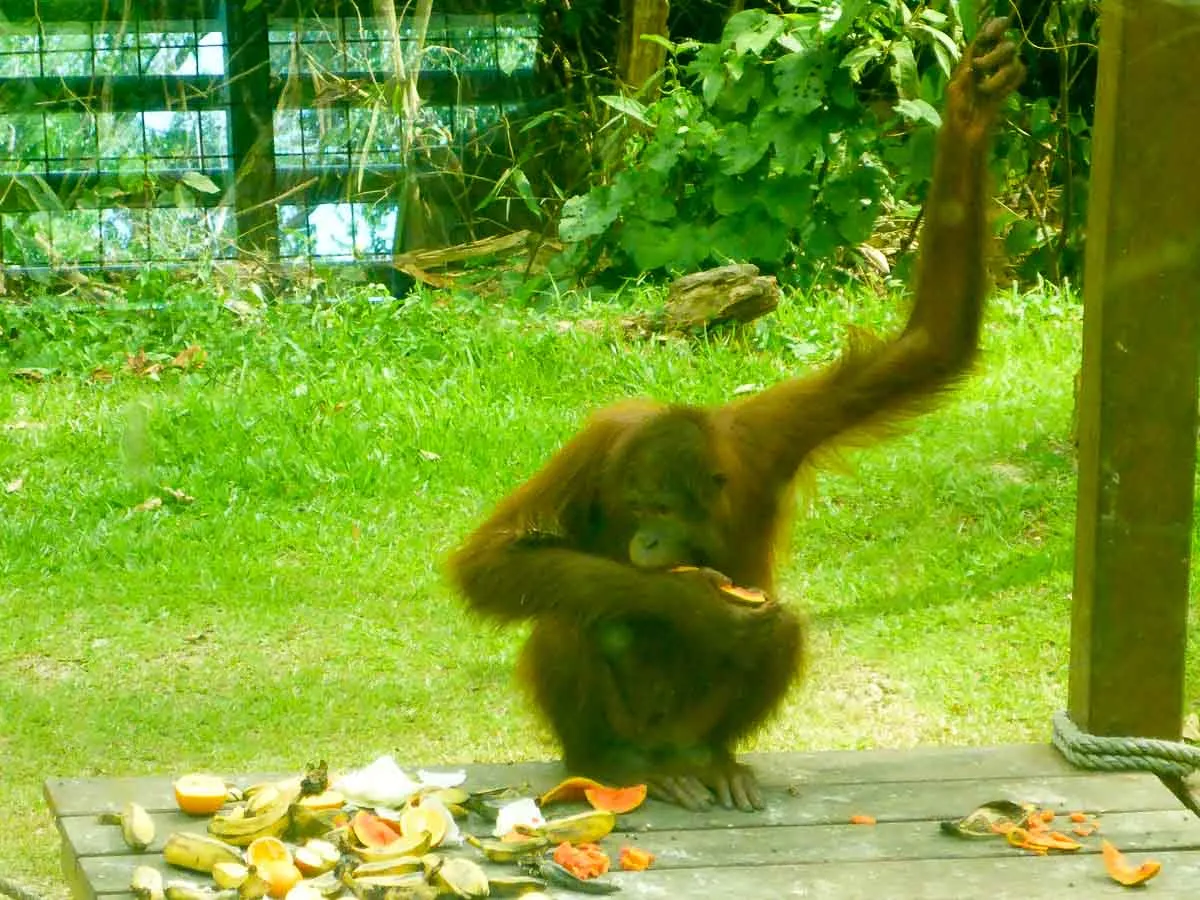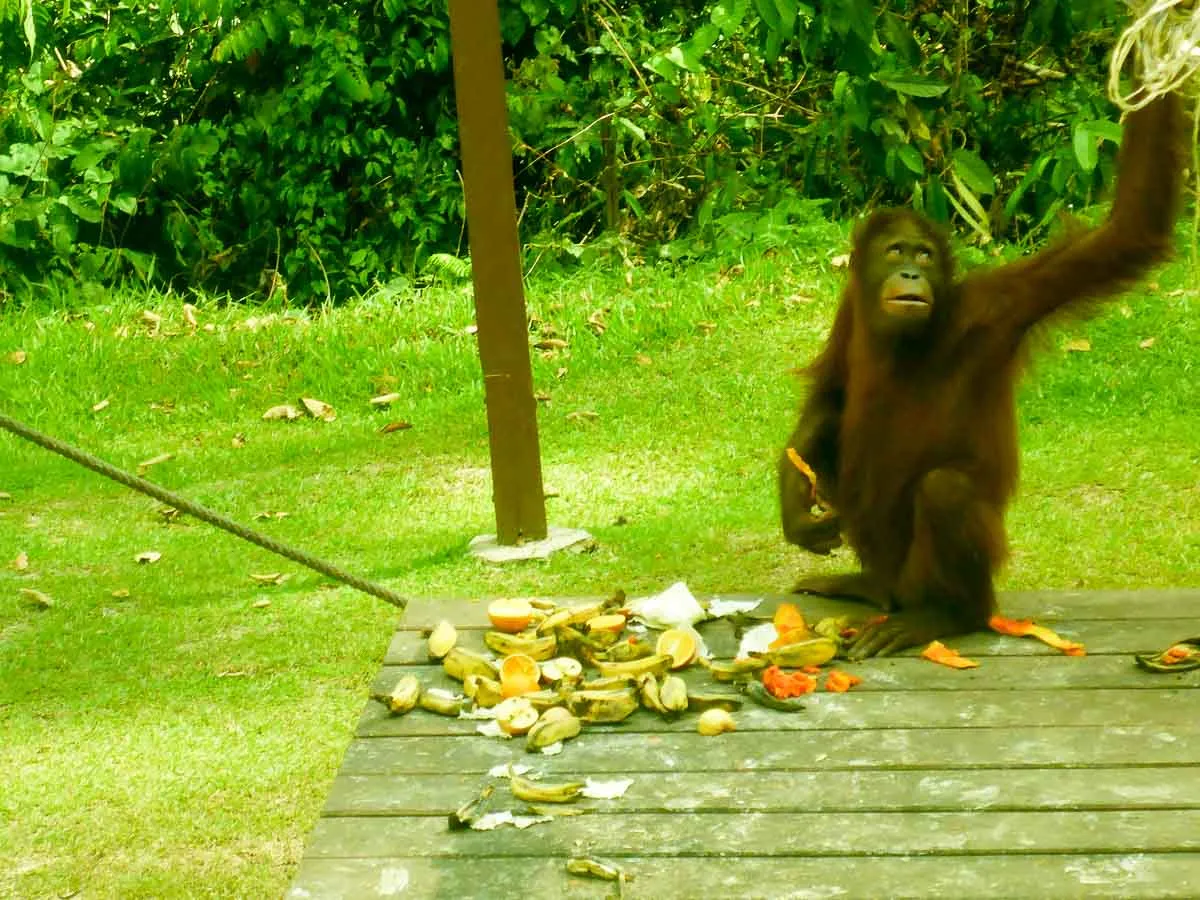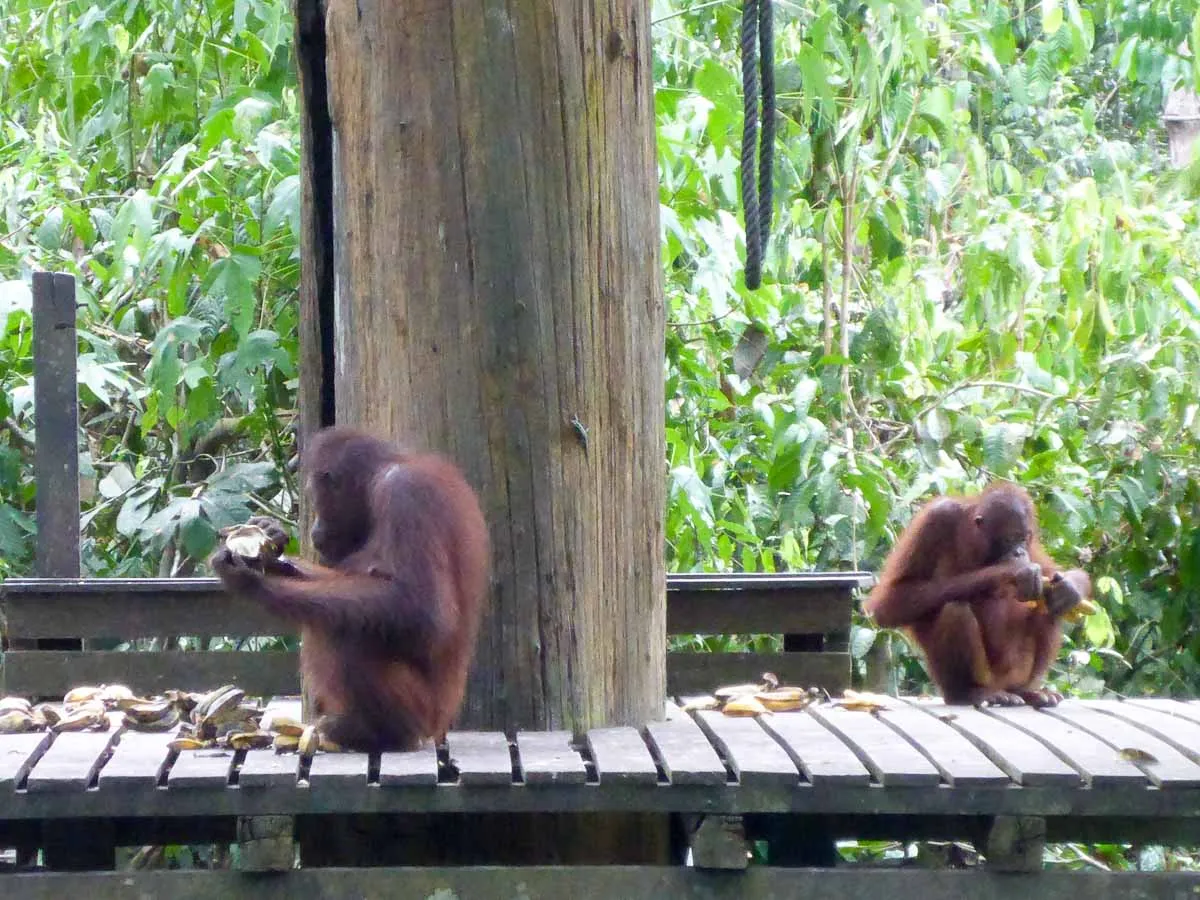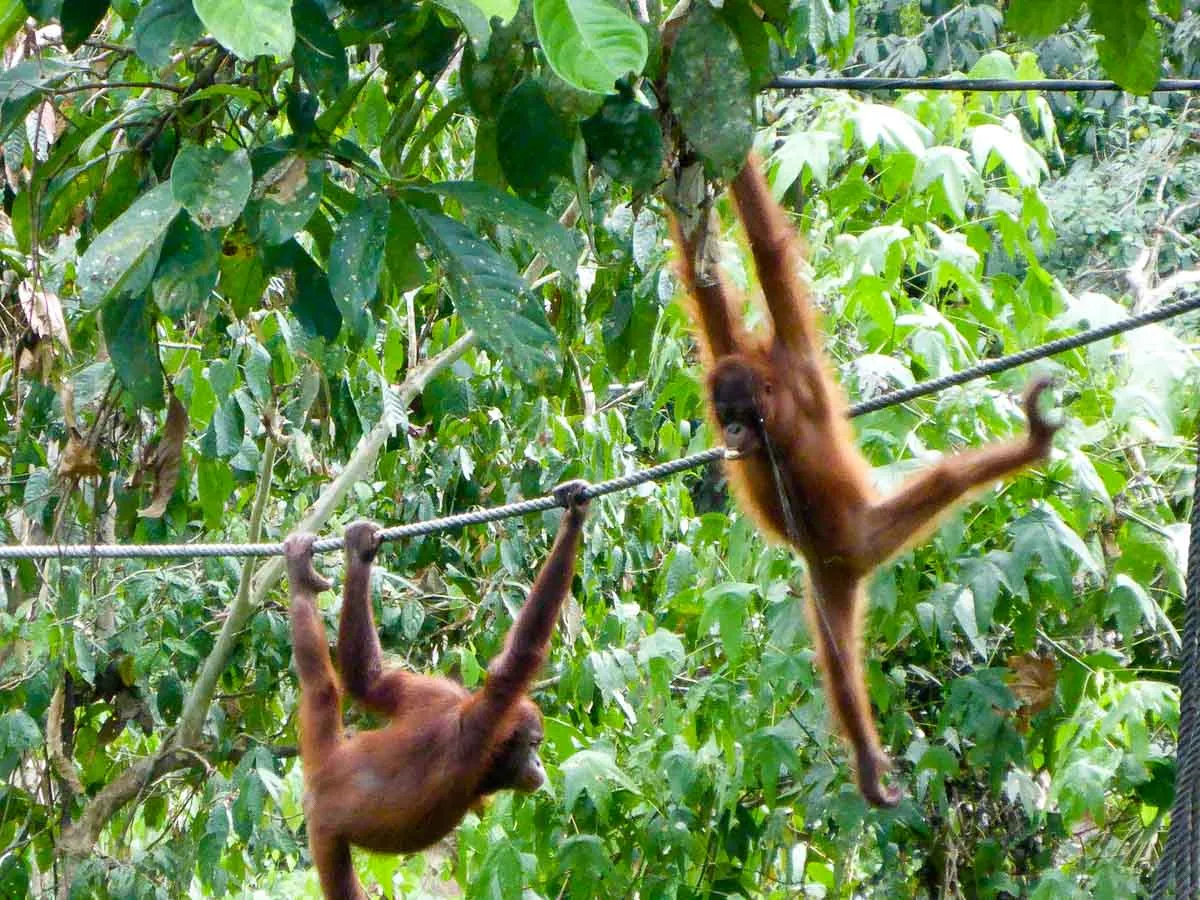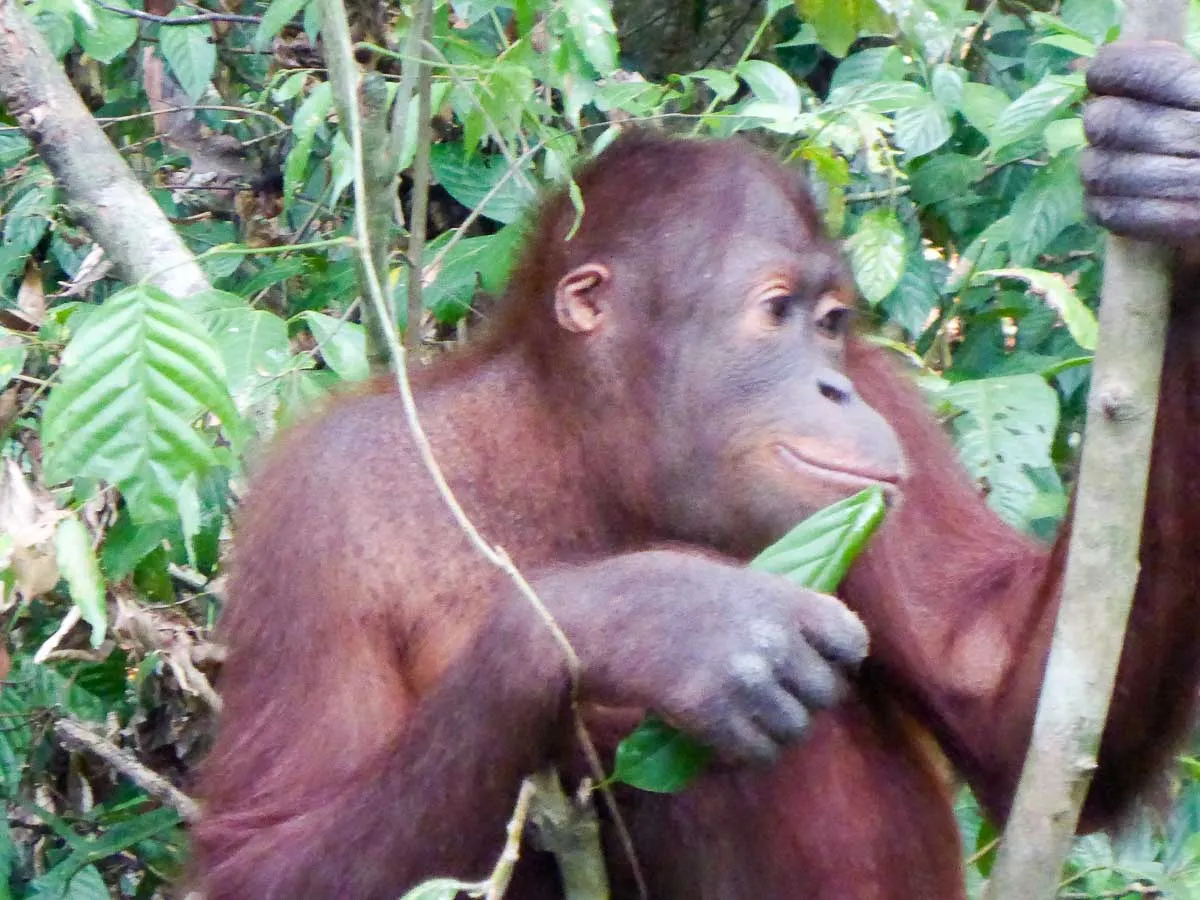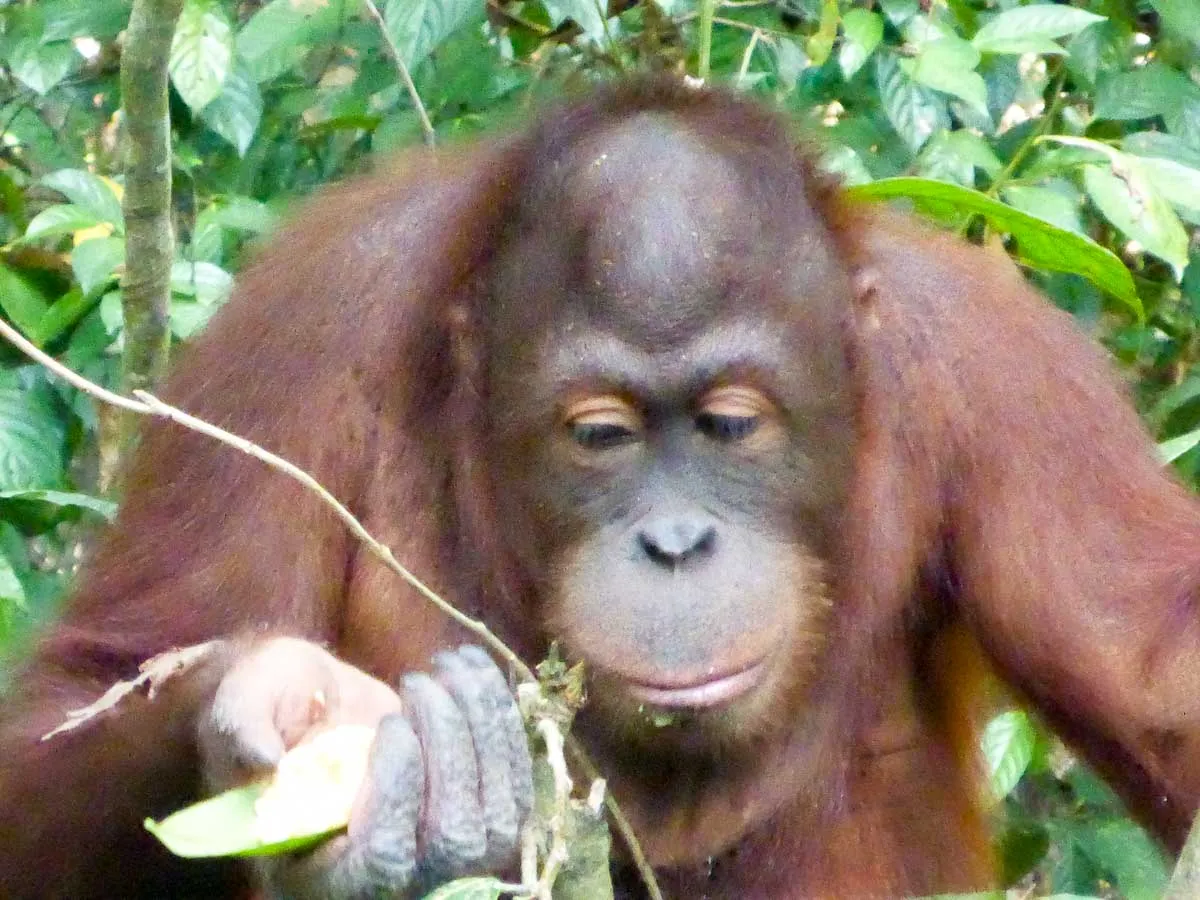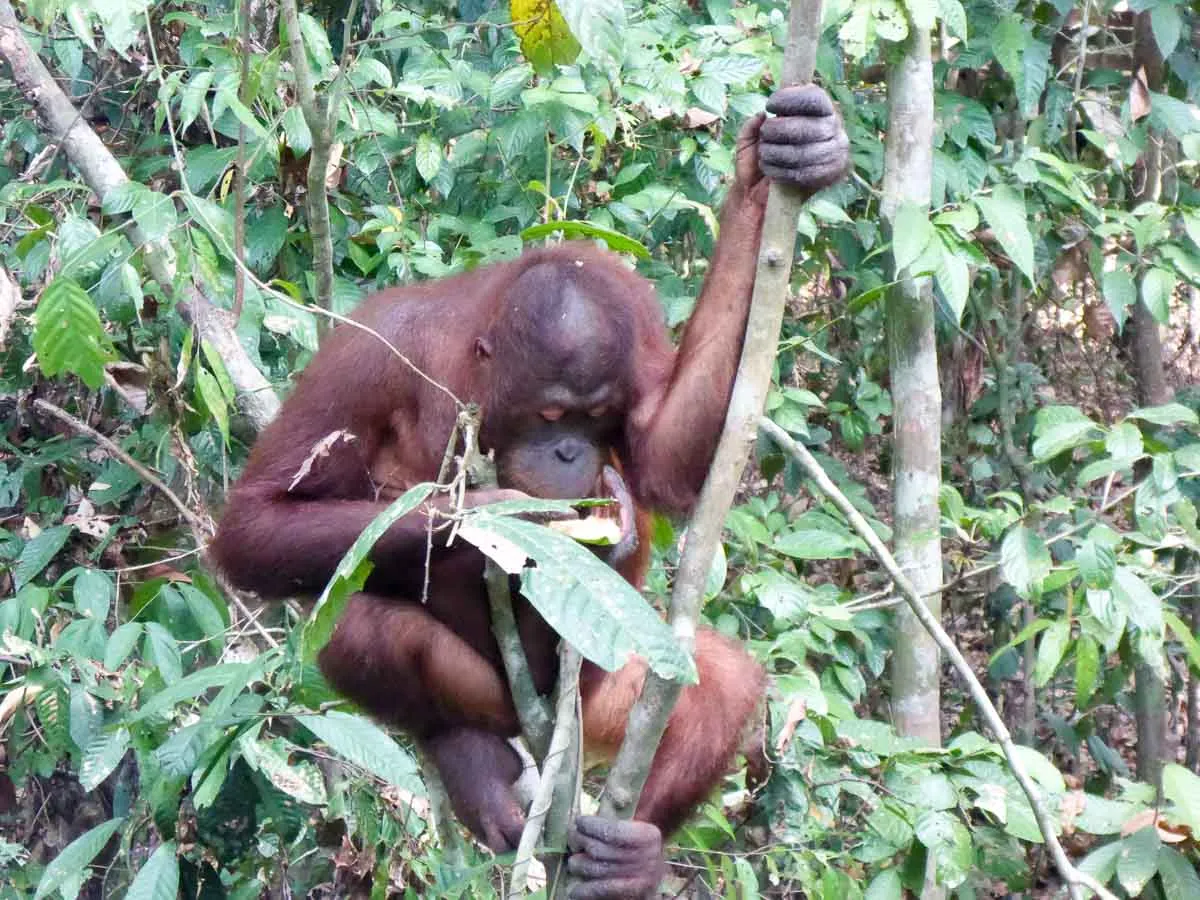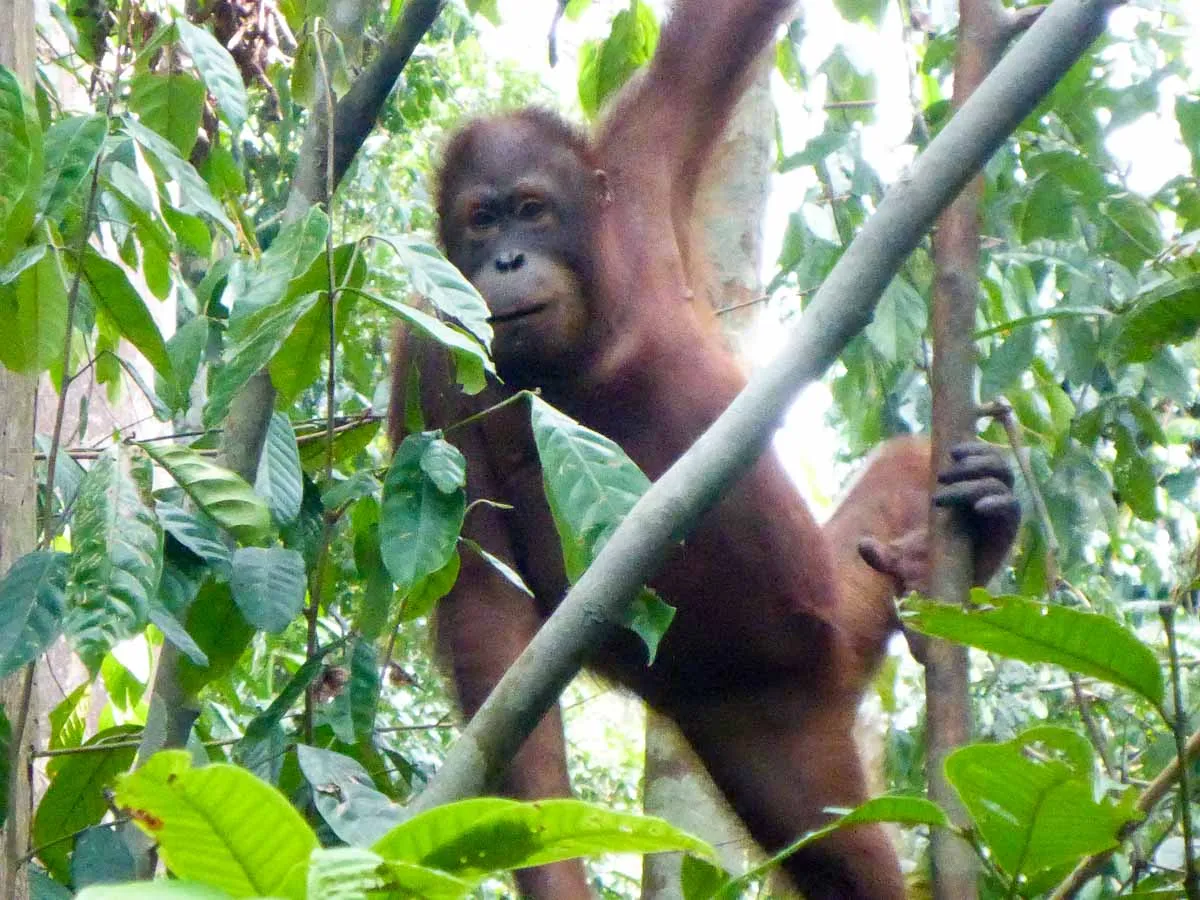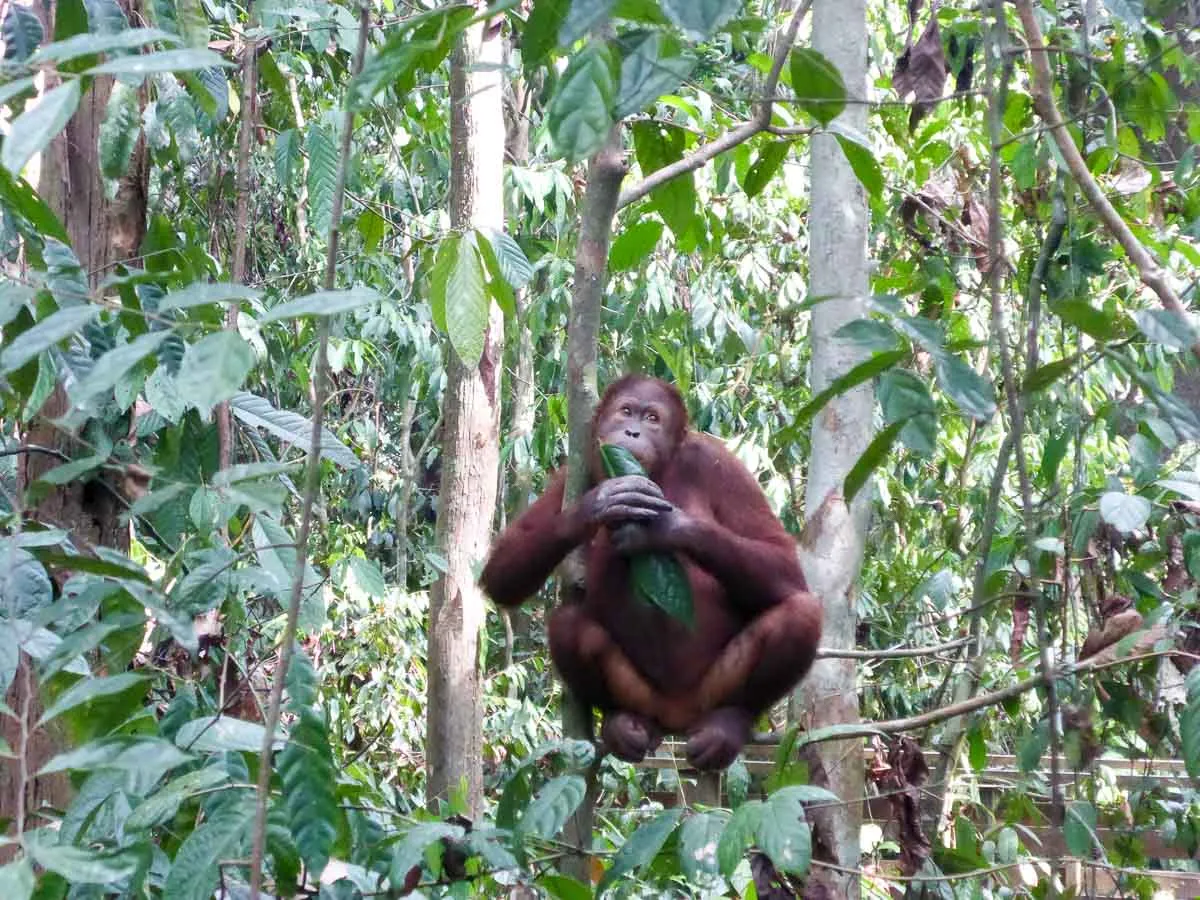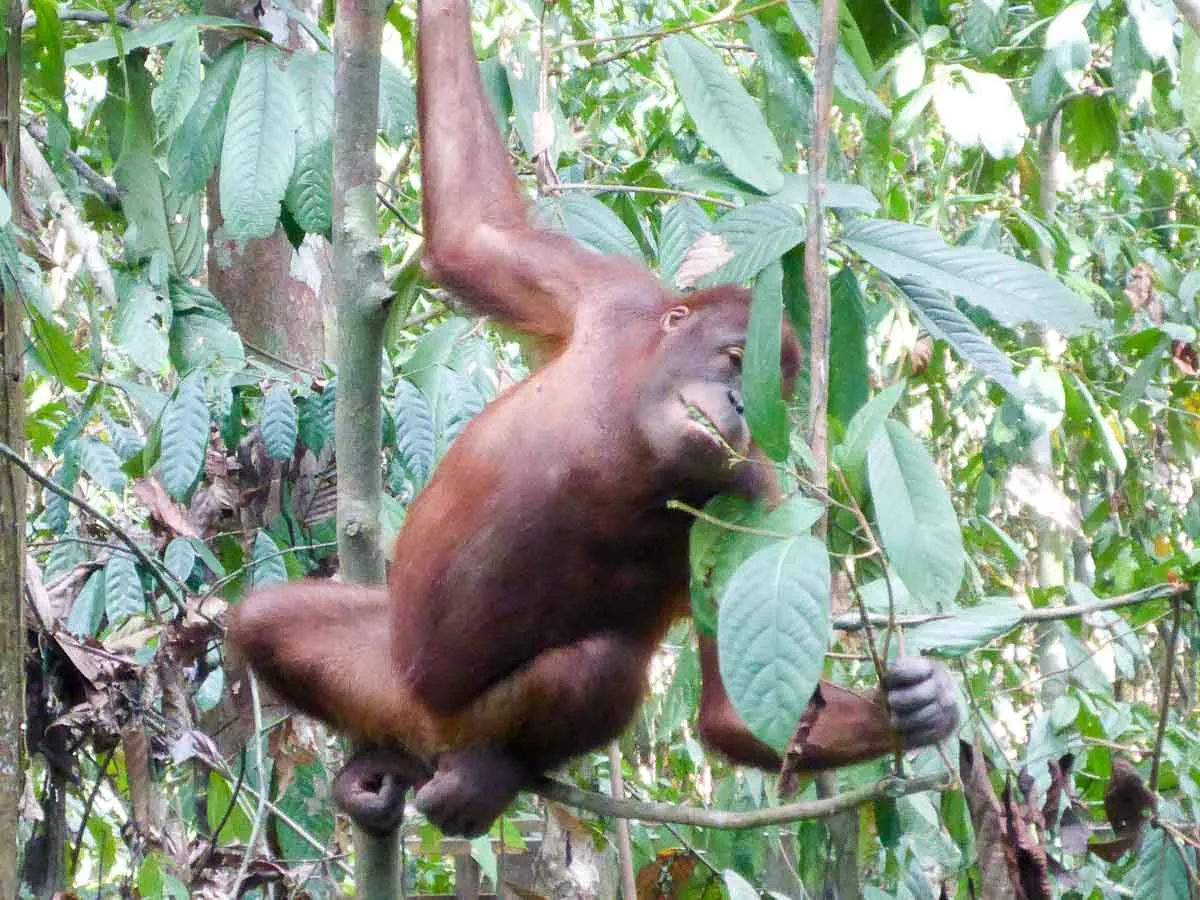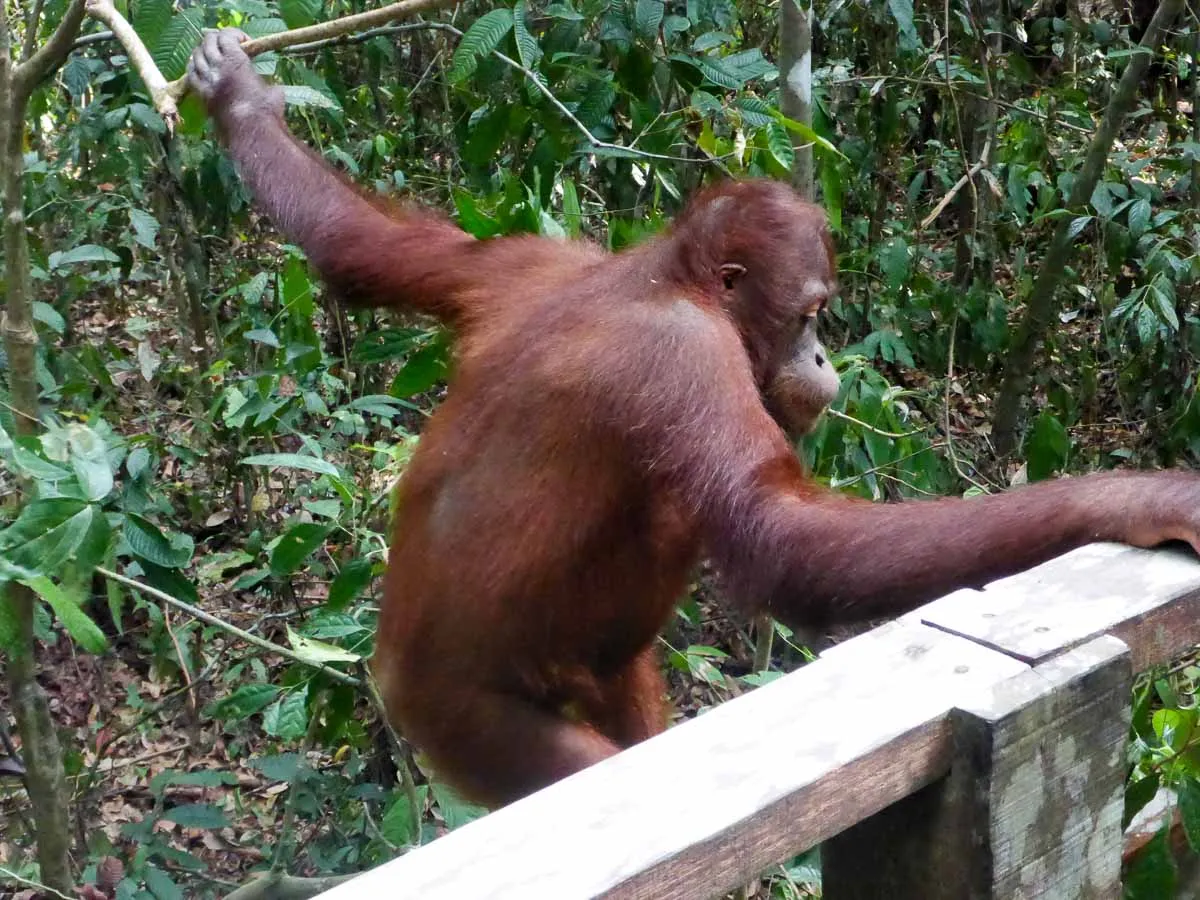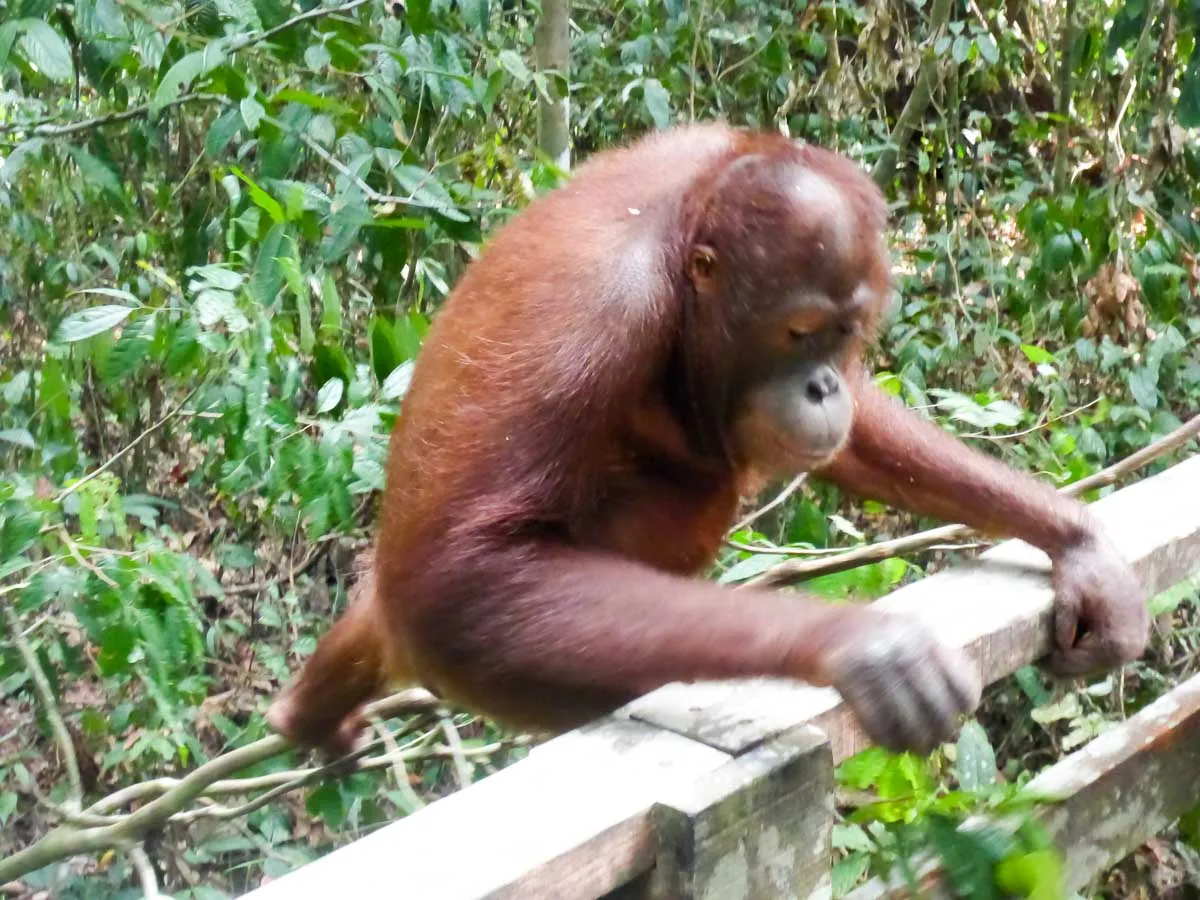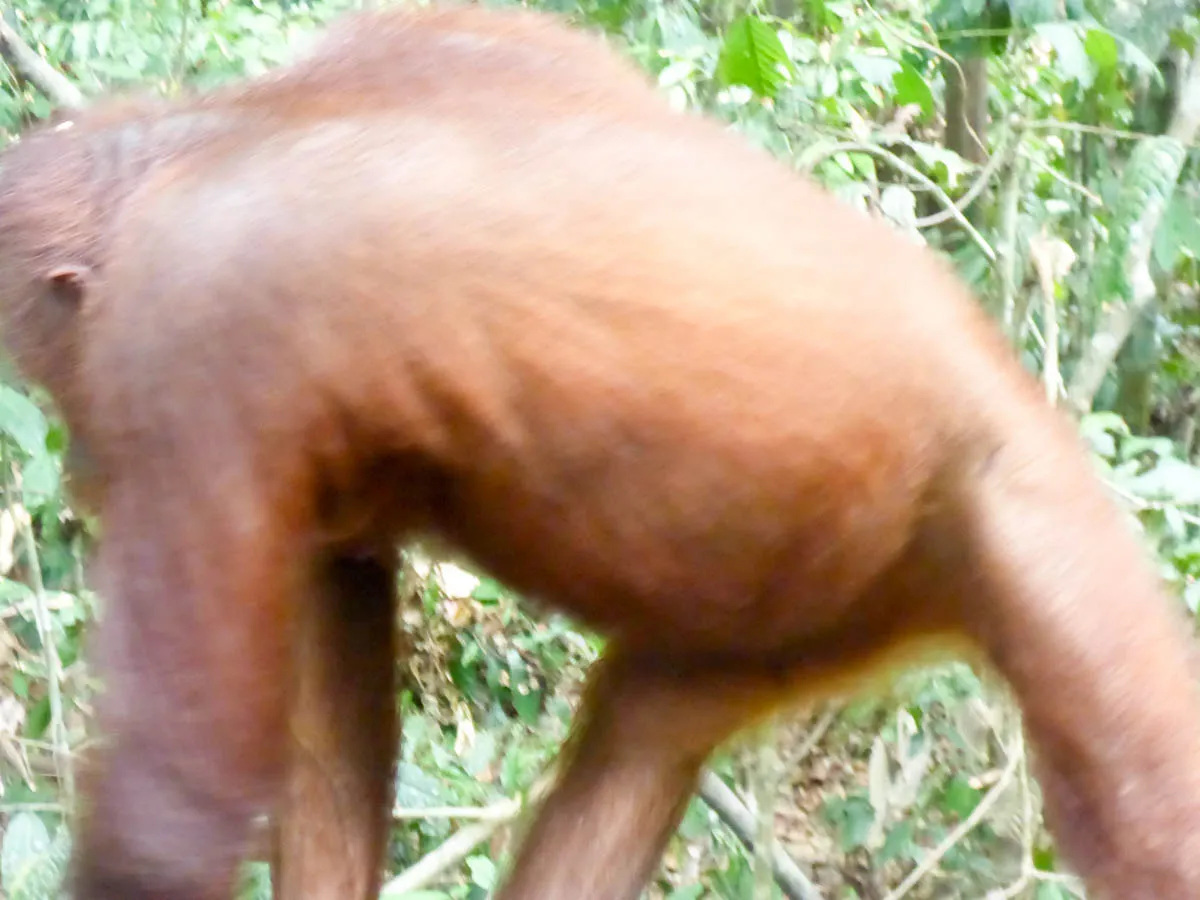We flew from the Malaysian island of Langkawi to Sandakan in Eastern Borneo. The state of Sabah is well known as a base for modern day pirates and Borneo is famed for its head hunting tribes. Despite the dangers the main reason to come here is of course to experience nature, Borneo has one of the largest rain forest eco-systems in the world and is home to many species of animals that only exist on the island. Our first stop was to check out the animal rehabilitation centres nearby.
Sepilok Orang-utan Rehabilitation Centre
Orang-utans are synonymous with Borneo and we were excited to meet some at Sepilok rehabilitation centre. These lovable ginger apes are native to Indonesia and Malaysia and are only found in the rainforests of Borneo and Sumatra. It was shocking to discover that the depleting numbers of Orang-utans in Borneo has now put them on the endangered animal list. The situation is worse in Sumatra where there is estimated to be only 7,500 remaining, classifying them as “critically endangered”.
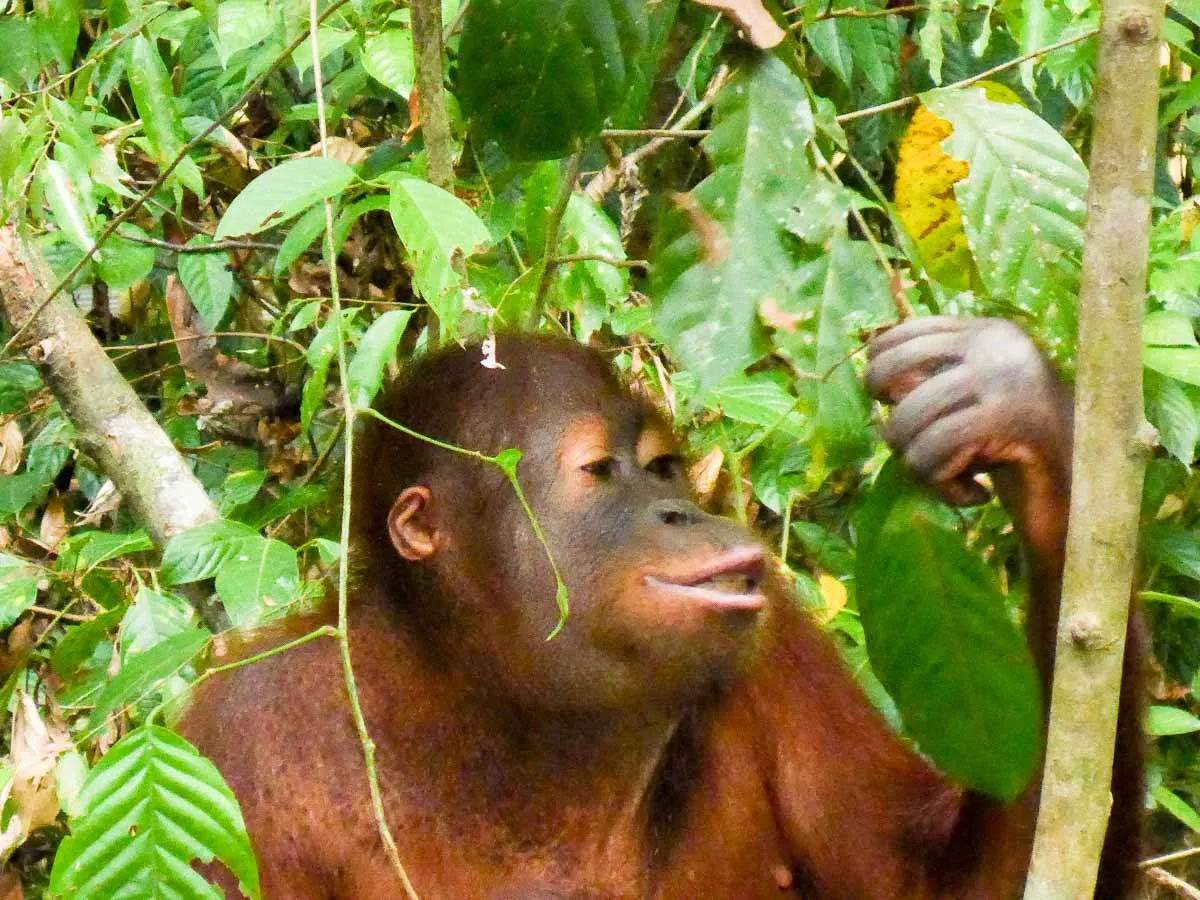
The rehabilitation centre we visited aims to return orphaned, injured or displaced orang-utans back into the wild. To catch a glimpse of them we visited during the two daily feeding sessions.

Orang-utans rely on their mothers to provide food for them up until the age of 5 or 6, so the orphaned orang-utans will come to the centre to feed until they are able to find their own sources.
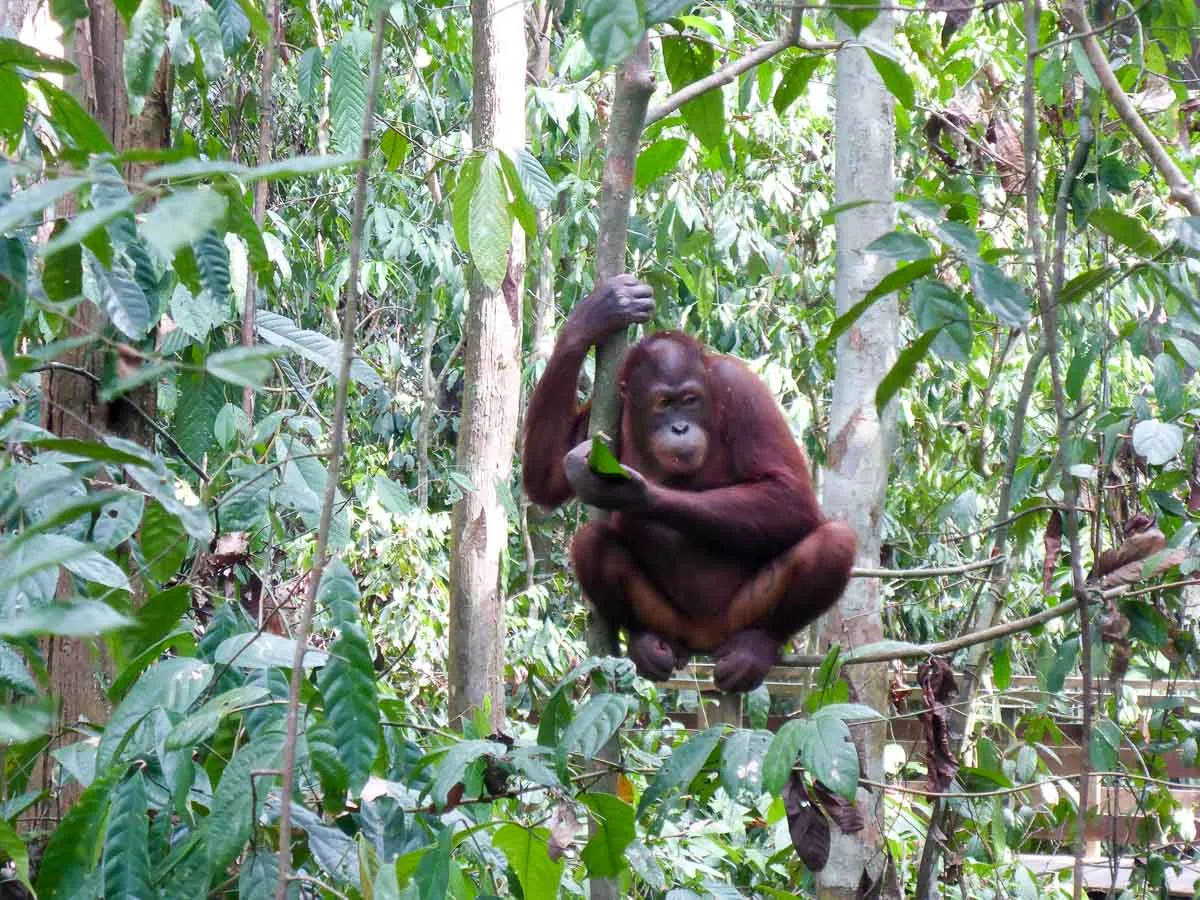
There is also a nursery for the younger apes where they are rehabilitated before being released back into the wild. It was fascinating to watch these playful creatures appear from the trees swinging along the ropes.
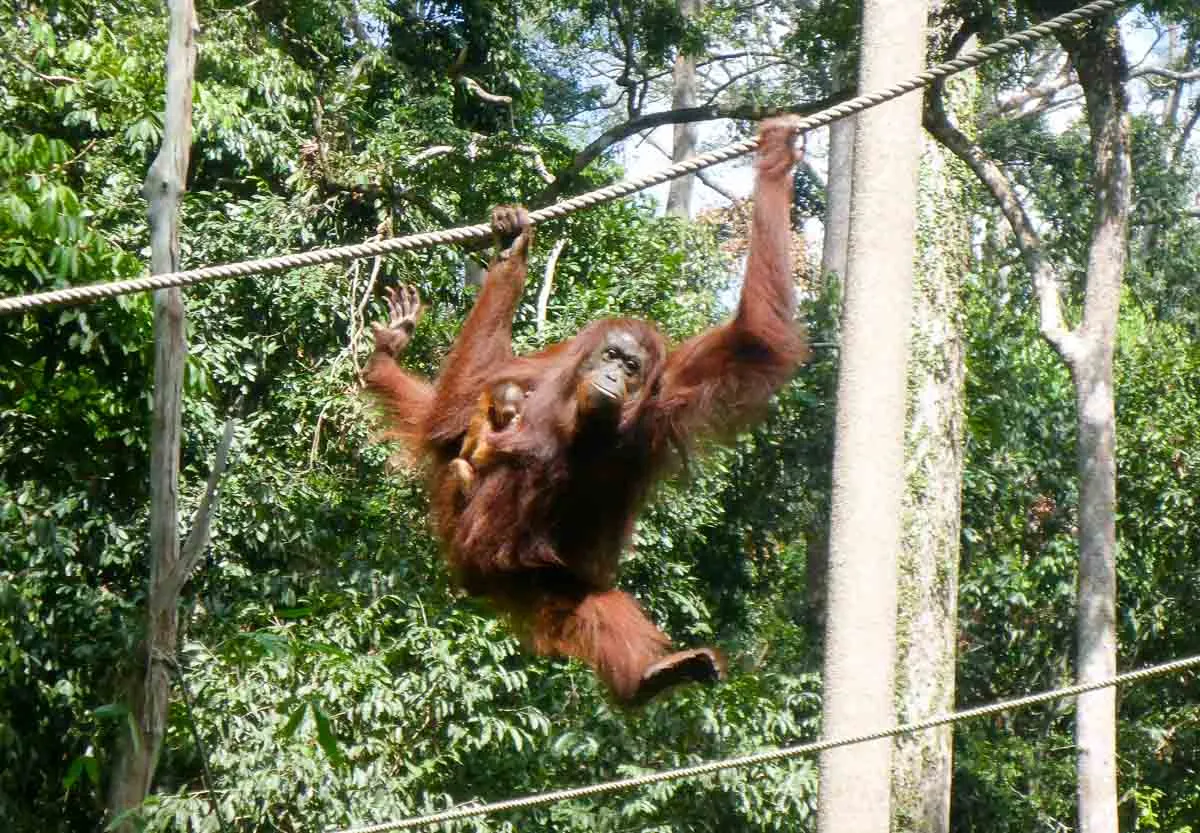
About 96.4% of our DNA is identical to orang-utans. Genetically speaking, along with chimpanzee and gorillas, it makes them our closest cousins. As one sat near the walkway we were able to get a close look at him and it’s not hard to see the resemblance.
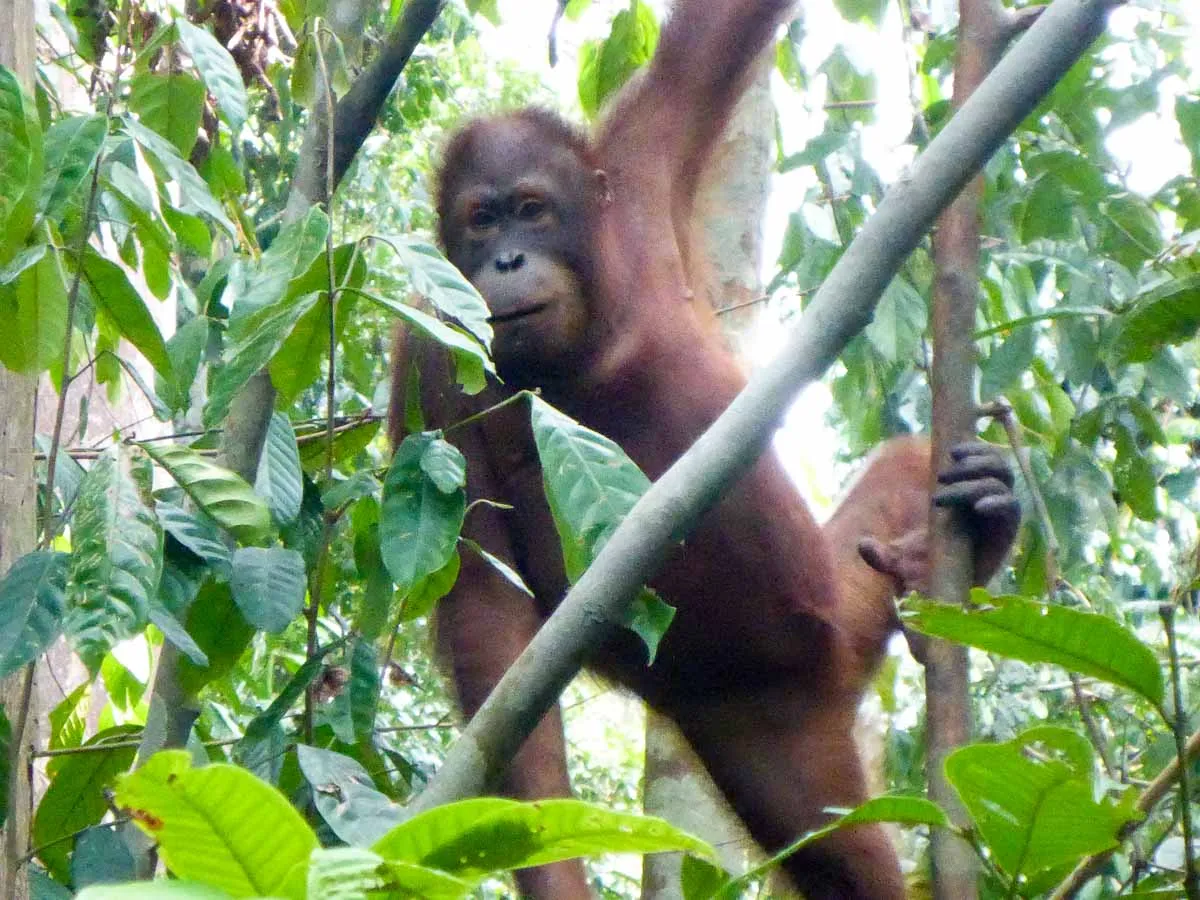
As she sat precariously perched on a tree, regurgitating her food onto a leaf and the eating it again it was hard not to be amazed. The likeness of this great ape to us is remarkable, the facial expressions reminded me of certain people.
All of a sudden she climbed out of the tree and started to climb onto the walk way. Heading straight for us.
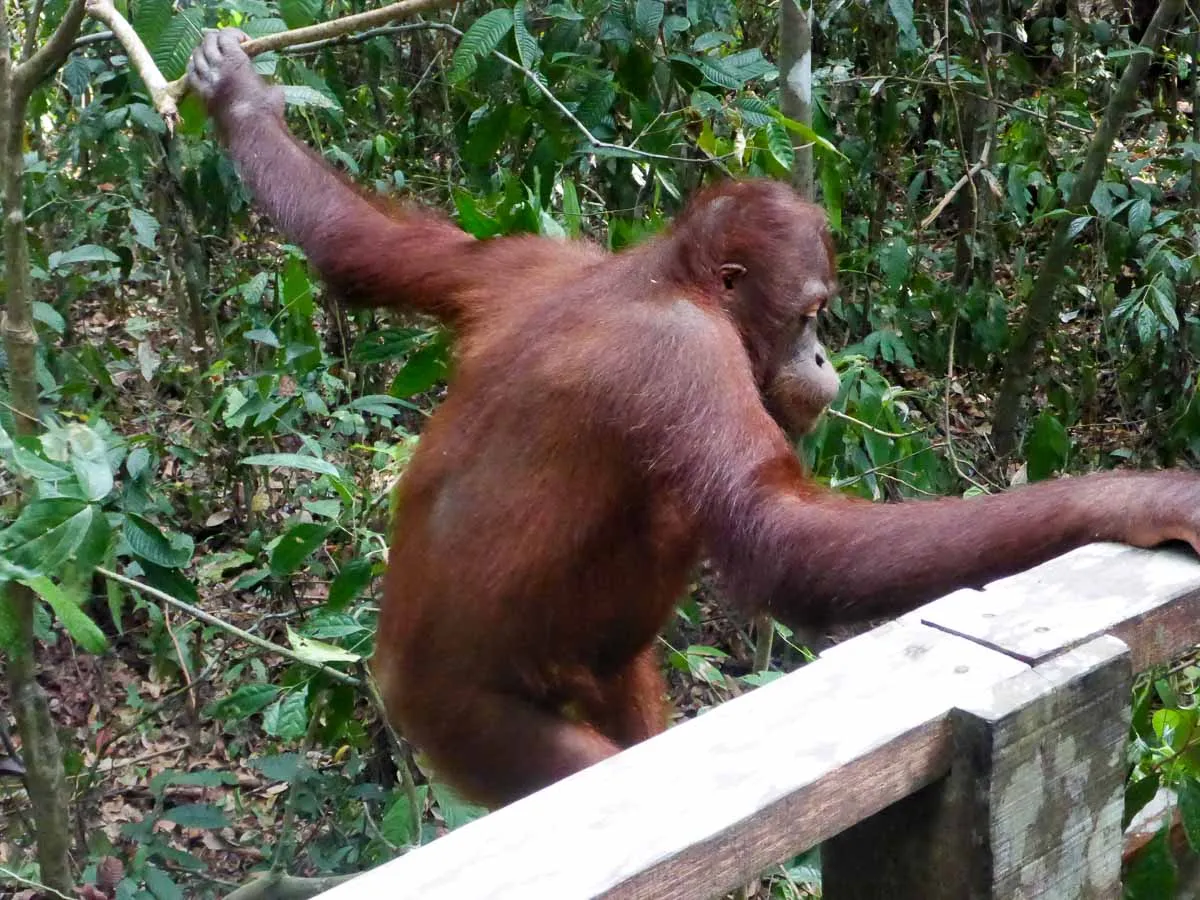
For a second I did not know what to do, our heart rate began to increase as the adrenaline kicked in. A wild Orangutan was a meter away from and coming closer to within touching distance, we both wondered what she was planning.
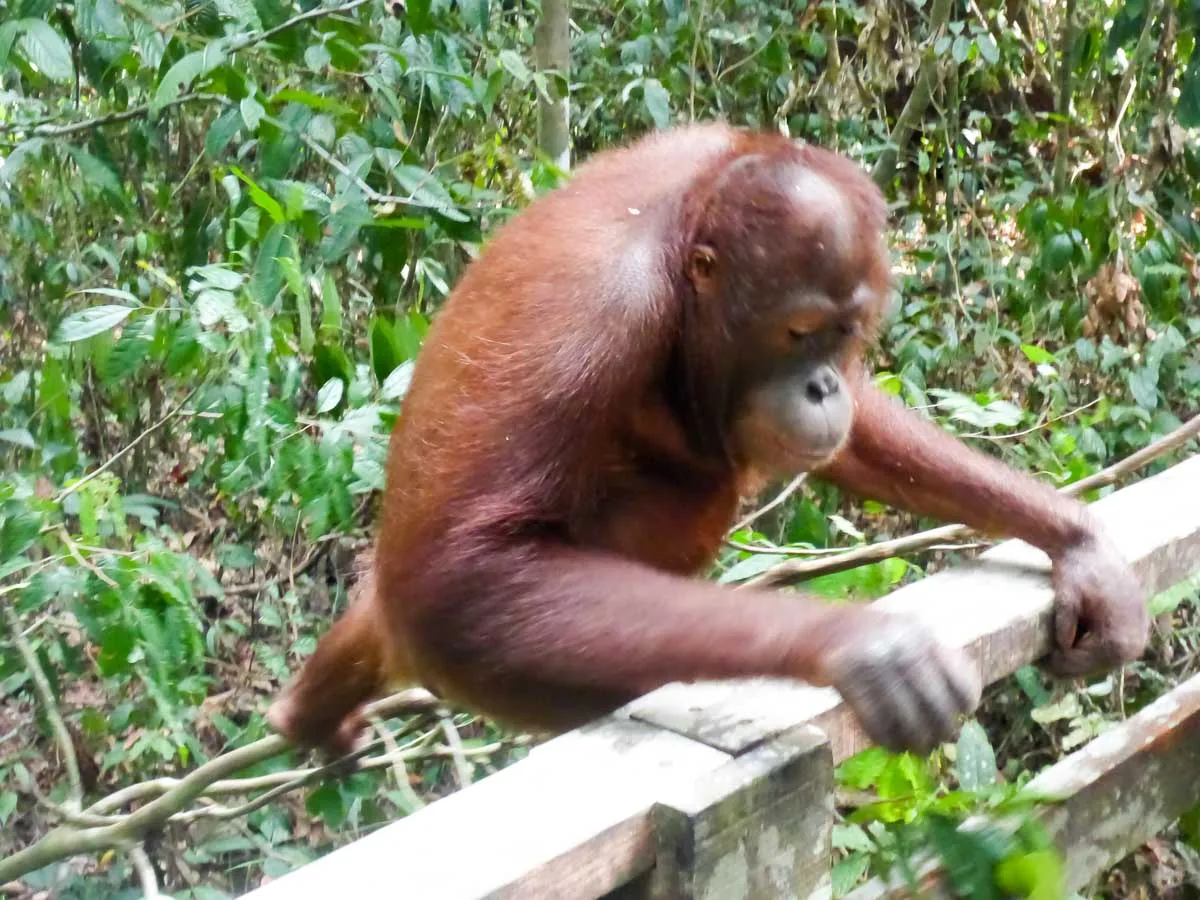
Luckily she just wanted a walk along the fence. As we watched her walk away into the distance we were amazed, such an amazing moment coming face to face with one of our closest cousins will last a lifetime.
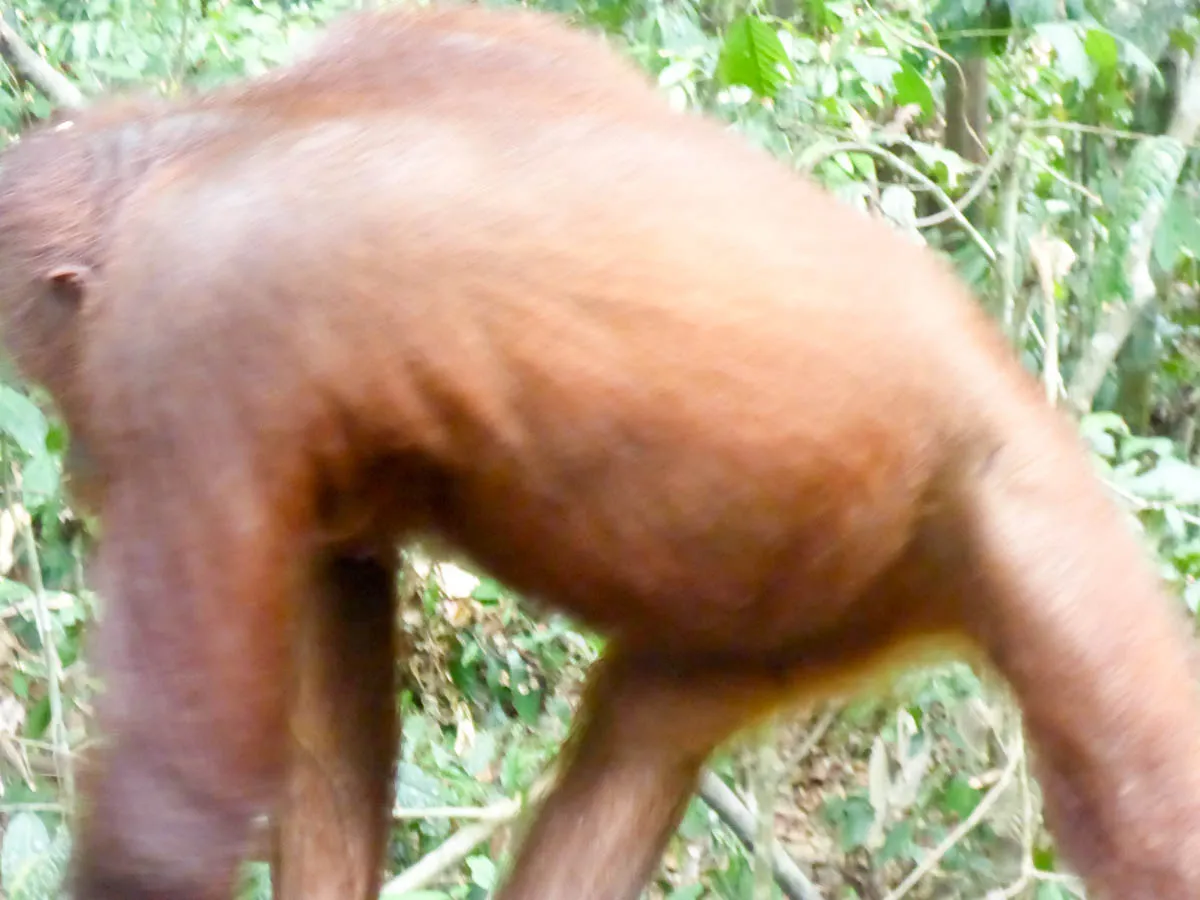
Bornean Sun Bear conservation Centre
We both knew very little about the world smallest bear when we entered the conservation centre but soon found out their situation was not much better than that of the Orang-utans.
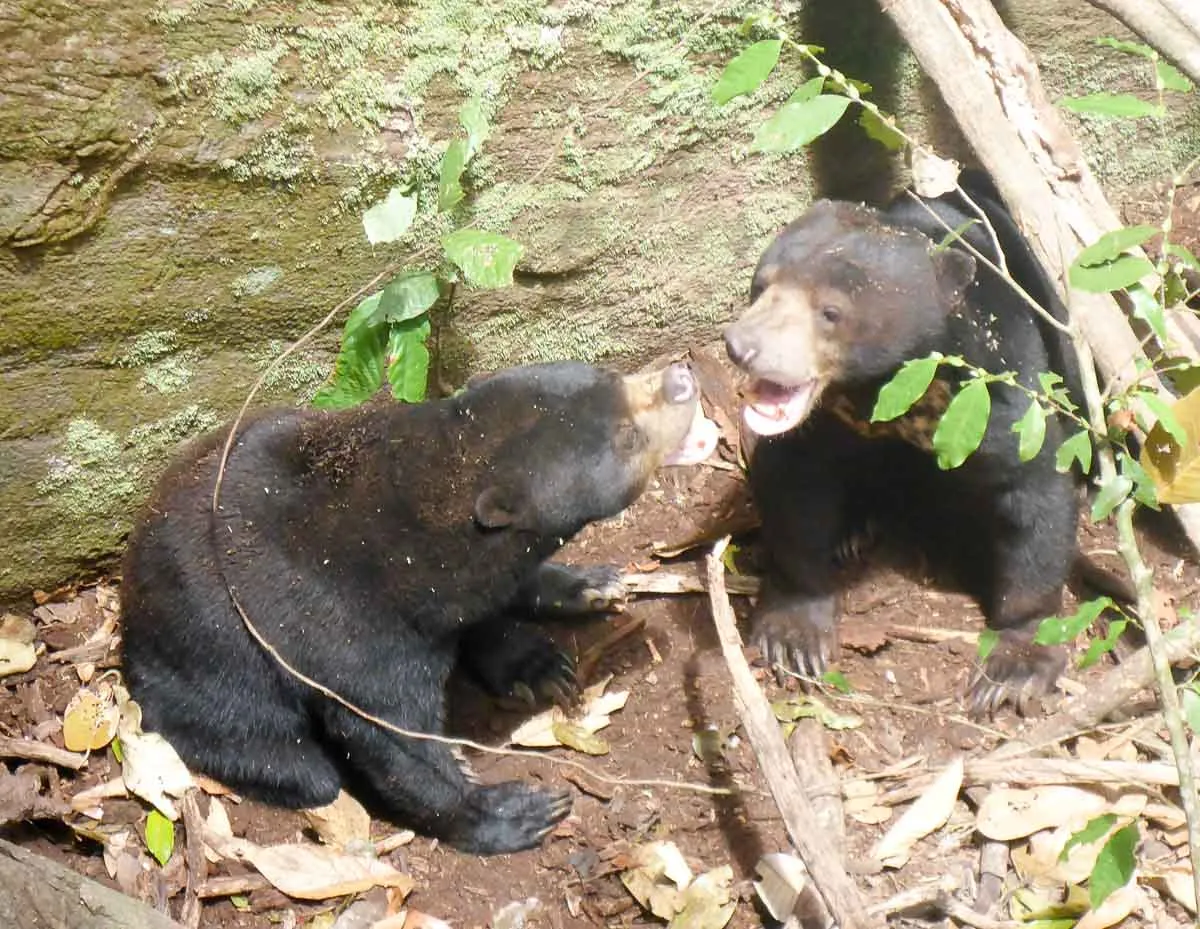
Sun bears survival is threatened by habitat loss and illegal hunting. Apparently there are hundreds of senseless people out there who actual want to keep them as pets. Cute when they are cubs, they soon grow up and are no longer wanted.
When we visited the centre it was full, currently holding 40 bears. We got a chance to speak to the guy who founded the project and so far he said they have only been able to successfully release one bear back into the wild, with the hope of releasing more later in the year.
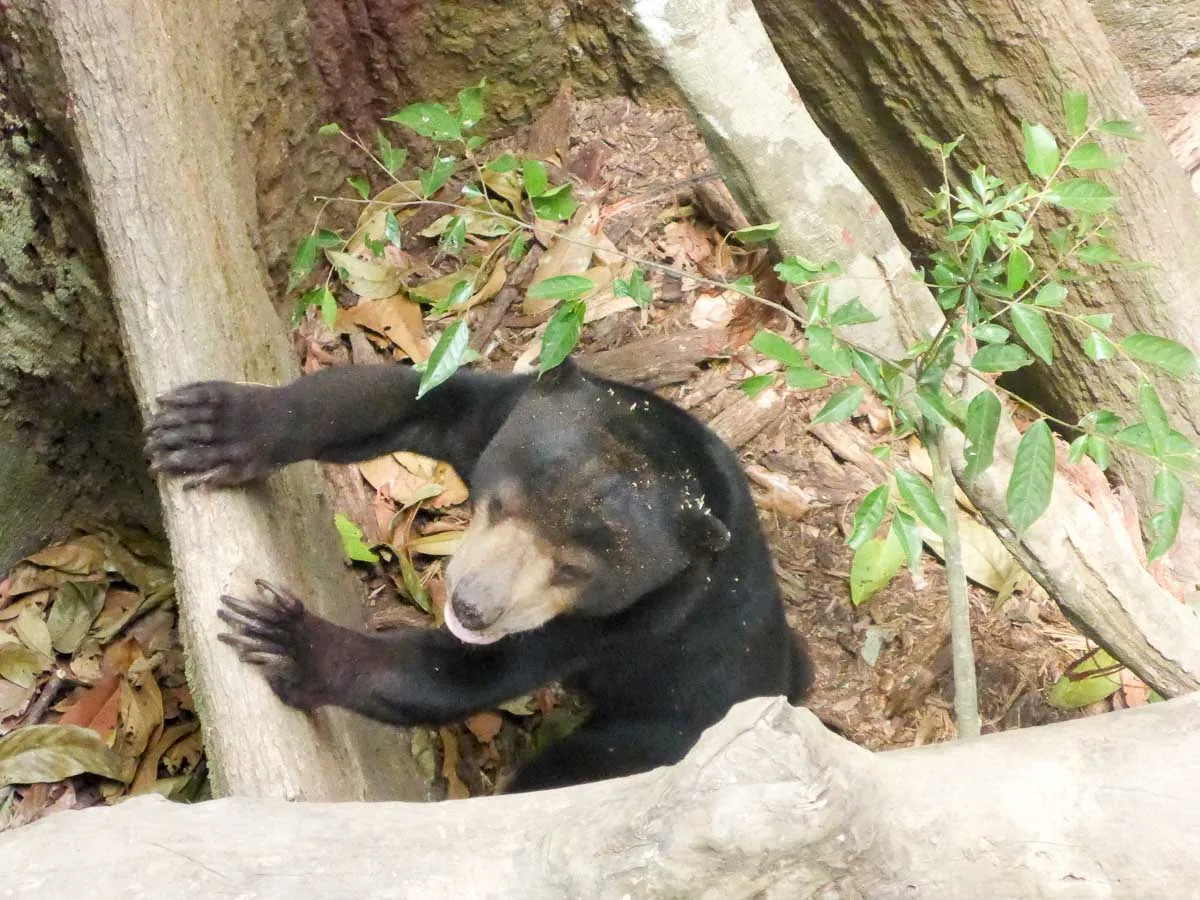
One distinctive feature of these bears is there unusually long tongue which is used for reaching honey. Sadly, it has been found that the population of sun bears, which are found throughout South East Asia, is in decline, by at least 30% over the past 30 years and is continuing to decline at this rate.
Our visit to both centres ended up being an entertaining, informative, and in many ways, eye-opening, insight into these two unique animals.

